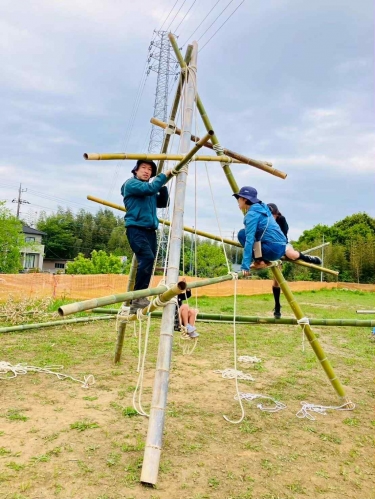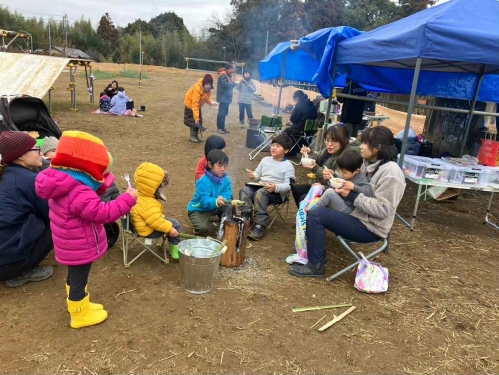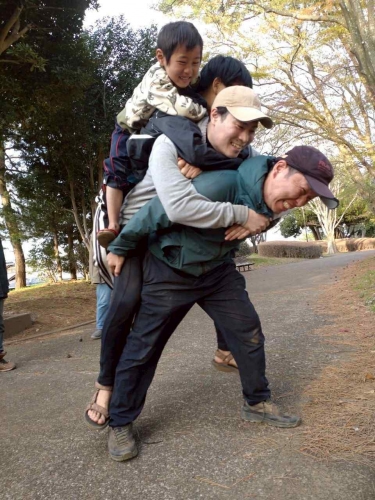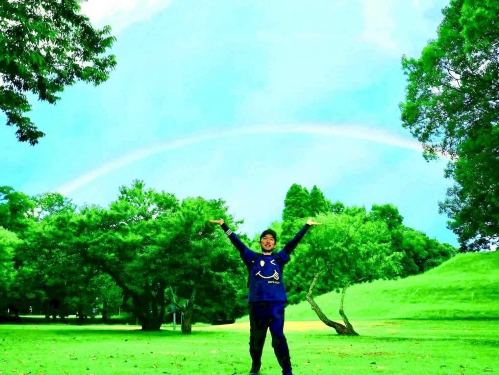When you say Narita, many people probably think of Naritasan Shinshoji Temple, but it is not the only thing to see. In Narita, there are many people who provide hospitality to visitors, and I would like you to know about them. Here, we will introduce them to you as “People of Narita”!
This episode's guest is Mr. Tomonori Kato, Representative Director of Narita Omusubi Play Park. He runs a “play park” in Narita that supports children's independent play, an initiative that has been gaining attention. We spoke with him about the details of this work and his personal thoughts.
ーFirst, please tell us about the initiatives at Narita Onigiri Play Park.ー

Today's children are said to lack the “three spaces” of time, space, and companionship. Their schedules are packed with cram schools and extracurricular activities, and places where they can lose themselves in play like Doraemon's secret base are dwindling. Even when they go to the park, it's empty. Driven by the desire to reclaim spaces where children can play freely in such an environment, we are taking action.
Currently, we hold events on the first and second Saturdays of each month, as well as the third and fourth Mondays. Additionally, we borrow the grounds of Hirayama Construction in Ōfukuro to hold events on the last weekend of the month. Utilizing subsidies from Narita City, we plan to increase events on the second Saturday and Sunday going forward.
Parks often have many restrictions like “No balls” and “No open flames,” but play parks strive to eliminate prohibitions as much as possible. The foundation of play parks is “Play freely at your own risk” and “You take responsibility for your trash, injuries, and lunch.”
ーIs there a target age group?ー

Basically, it's open to everyone from newborns to adults. Mothers with babies, expectant mothers, elementary school children, and sometimes even grandpas in their 80s. It's a place where anyone can participate.
When a mother with a baby arrives, the other mothers naturally take turns holding the child. Some even say, “I'll just pop out to give birth,” and return right after (laugh). It's become a place where people naturally support each other across generations.
ーI understand you are also involved with play parks in Chiba City and Yotsukaido.ー
Chiba City utilizes parks as play parks. In Yotsukaido, they're creating play areas by clearing trees in the satoyama. Kids build secret bases and make their own pools. It's a “permanent” play area where they can come every day and pick up where they left off yesterday.
The kids say things like, “I'm off to Brazil for a bit!” and dig two meters into the ground (laughs). They tell me, “You won't know until you try.” Sure, there are risks, but I feel the importance of learning through failure. Experiences like these are truly precious for today's children.
ーPlease tell me how Mr. Kato became the representative.ー

It all started when seven mothers wanted “a place to play with their kids.” But over ten years later, the children grew up and the members' life stages changed. That's when I realized, “If I don't do it, it won't continue.”
My main job is at a real estate company, but every day I work as a mediator between people. That's precisely why I thought I could play a role in balancing things between parents and children.
When people ask me, “Why did you become the representative?” I joke, “I figured I'd secure a job for myself 20 years down the line” (laugh). But seriously, I want this to be an activity that connects generations.
ーPlease tell me about your future plans.ー
It is said that Chiba Prefecture has approximately 40 to 50 play parks. Narita City has 10 districts, and we hope to eventually create one children's gathering place in each district.
It's said that a playpark can start with just three people. We want to build a system that supports those who want to get involved. Our goal is to establish sustainable mechanisms so children can feel this is their place.
ーFinally, please share a message for those visiting Narita.ー

Play parks are places where everyone—locals and travelers alike—can play. Even in a small space in front of the station, simple activities like blowing bubbles or playing menko cards foster connections across generations.
We want to create more places where children can play freely, even in small pockets of green space like the pocket park in front of Narita Station. We'd be delighted if we could gradually expand these warm, welcoming spots throughout the city.



